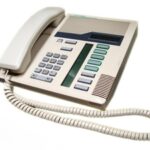The International Telecommunications Union sets data speed requirements for each ‘generation’; a technology must meet this standard in order to be branded as that generation of network. Regardless of the technicalities of these various named systems, as their generation increases, their data transmission rates increase as well. These acronyms are derived to make it easier for consumers to understand cellular devices and carriers with the most advanced system. In addition, all of these systems, as standard across computers, download faster than they upload.
3G
3G is a pseudo-acronym for “third generation mobile telecommunications”; it is the name of a network of technologies that deliver data in a range of speeds determined by the ITU. 3G systems must operate peak data rates of 200 kbps in the downlink.
3.5G and 3.75G: The In-betweens Better Known as HSPA
3.5G is better known as HSPA (“High Speed Packet Access”) and often comes up on cellular screen status bars as 4G. HSPA is not true 4G, but it is marketed as such by carriers. This technology is a combination between two different upload and download protocols, respectively High Speed Downlink Packet Access and High Speed Uplink Packet Access. In short, though HSPA is not true 4G, it is significantly faster than standard 3G, as HPSA can deliver peak rates of 14 Mbps in the downlink and 5.67 Mbps in the uplink.
HSPA+
“Evolved High Speed Packet Access” implements various improvements on the HSPA protocol and delivers theoretical speeds of 84 Mbps in the downlink and 22 Mbps in the uplink; an actual user in the real world will experience slower speeds. HSPA+ is not too far from HSPA in that it delivers notably faster rates only when a device is in an optimum location.
3.9G: Pre-4G Better Known as LTE
“Long Term Evolution” doesn’t quite qualify as 4G. With speeds of 300 Mbps in the downlink and 75 Mbps in the uplink, it fails to meet the standard.
4G
By standard, a 4G system delivers peak rates for mobile users at 100 Mbps and stationary users enjoy rates around 1 Gbps. Even Verizon Wireless’ LTE network (dubbed 4G) does not deliver rates in this range; rather, peak download rates are around 6 Mbps. AT&T; also brands its current HSPA+ network as 4G, though its actual download speeds have been field tested to be lower than Verizon’s. (Dolcourt, ” Verizon iPhone versus AT&T; iPhone: CNET’s data winner is… “)
Sources:
- ” ITU global standard for international mobile telecommunications ‘IMT-Advanced’ “. International Telecommunications Union. Retrieved February 29, 2012.
- ” ITU World Radiocommunication Seminar highlights future communication technologies “. International Communications Union. Retrieved February 29, 2012.
- ” IMT-Advanced: 4G Wireless Takes Shape in an Olympic Year “. Moray Rumney BSc, C. Eng, MIET. Retrieved February 29, 2012.
- ” Definition: 3G (third generation of mobile telephony) “. TechTarget. Retrieved February 29, 2012.
- Schultz, Beth. ” 4G LTE primer: Long Term Evolution evolves “. TechTarget. Retrieved February 29, 2012.
- Dolcourt, Jessica. ” Verizone iPhone versus AT&T; iPhone: CNET’s data winner is… “. CNET. Retrieved February 29, 2012.





